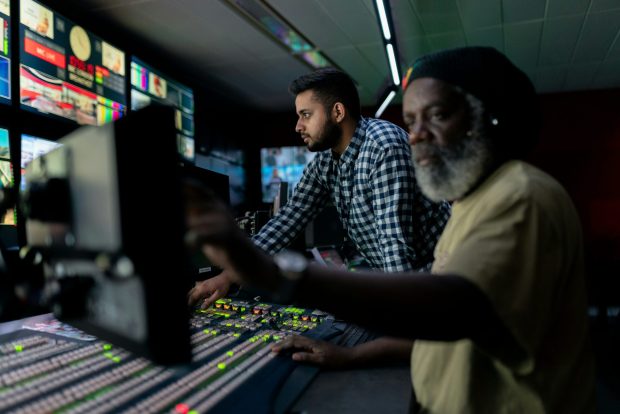The quality of the relationships works as a lubricant for the gears of collaboration in any organization. Many technology companies have been formed by young people in a highly competitive climate, with all efforts focused on growing fast and conquering the market. This has sometimes resulted in toxic working environments.
The researcher Christine Porath has been studying inclusion and the workplace, as stated in her TED Talk on how respectful treatment between company employees is good for business. In it, she explains how aggressive attitudes of leaders and peers cause real damage to people’s productivity. The experiments she and her collaborators carried out show that witnessing disrespectful behavior, or being exposed to rudeness, leads to errors and a drop in performance in all industry types.
Her work, described in detail in the book Mastering Civility, A Manifesto for the Workplace (Balance, 2016), argues that microaggressions interfere with the productive climate and prevent the development of the receptive and creative environment that ultimately makes a company successful.
With controlled experiments, Porath demonstrates that bullying can quickly spread throughout a team. An aggressive leader makes their direct reports act aggressively too, because they tend to imitate the leader’s behavior, and this way of acting becomes part of the company’s culture.
Christine Porath’s data proves that a tense atmosphere makes people more prone to mistakes. For example, people are five times more likely to miss important information if stressed out. Lack of respect also impacts commitment to the company. After being the target of aggression, 60% of people are more likely to reduce their efforts, and 12% are more likely to resign.
A climate of incivility lowers the morale of the whole team, not just the person targeted by the disrespectful comment. Everyone becomes less enthusiastic about their own work.
Some leaders still think that being aggressive and rude is desirable behavior and that they need to be that way to inspire fear and obedience. The data, however, shows the opposite. Employees who act with respect and politeness are more respected, are twice as likely to be recognized as leaders, and perform better in their roles.
A tense atmosphere makes people more prone to mistakes. For example, people are five times more likely to miss important information if stressed out.
Communication parameters
Some simple tools can be used for more effective communication, for those who are trying to act as allies, and for those who want to position themselves in an assertive but respectful way. One of them is the ADEAR framework, which comes from “be a dear.”
- A – Affirm that you have nothing against the person and reinforce the value of your relationship with them.
- D – Describe the behavior without judgment.
- E – Explain what you felt.
- A – Assume a positive intention.
- R – Request or suggest a different behavior.
When you are the target of a microaggression, this framework allows you to take control of the situation and talk to the aggressor about the problem. For example: “When we talked about budgets earlier today, you said: ‘You’re making drama.’ Statements like that imply that I’m being overly emotional because I’m a woman and that my concerns aren’t real. That makes me feel belittled. I’m assuming that’s not your intention. I’d appreciate it if you didn’t make comments like this anymore. Is that all right?”
These are the steps: assume the person had the right intention and didn’t mean to harm you, make it clear to the other person that you were hurt and explain why, and then ask for a behavior change.
If people understand that this is a viable path, at least they have mental parameters to deal with a situation like this in their daily work. Having a roadmap of how to act can give people a good idea of where to start. Without established communication parameters, individual issues can escalate and quickly become institutional problems.
It is also essential not to absolve the company of responsibility for inappropriate behavior by its leaders, since in some organizations there is still a strong culture of protecting leaders, often classified as eccentric or genius, rather than abusive and destructive.
Leadership acts directly on the results of the culture change when it values collaborative work over individual achievements in its people’s performance review processes. Specific metrics that show how much a person has promoted collaboration make it possible to tie concrete incentives to the cultural transformation effort.
Individual and cultural differences
Hostility can manifest in microaggressions or “little jokes.” People’s cultural backgrounds are very varied, and even within the same country there are many cultural differences. Clear communication techniques reduce possible misunderstandings, which sometimes lead to conflict and resentment.
It’s hard to make generalizations about a culture. Only some people in Brazil like soccer, and there are disorganized Germans who are late for meetings. With that caveat, Erin Meyer shows, in her book The Culture Map: Breaking Through the Invisible Boundaries of Global Business (PublicAffairs, 2014), that there are some important cultural patterns and differences. For example, in communication, some cultures tend to be very detail-oriented, while others focus more on the big picture. For decisions, some cultures tend to be more hierarchical, while others are more egalitarian.
The greatest contribution of Meyer’s book is to show that people are different, made up of a combination of cultural and individual attributes, and that people need to listen better and ask more questions before assuming anything. Direct communication is the best way to avoid falling into the trap of understanding something that may be very different from what the other person meant to say, or of thinking that one is transmitting one message when, in fact, it is quite another that is being received.
Of course, everyone has blind spots. One idea is to analyze misunderstandings like these, when they are identified, as it were a post-mortem of a “communication incident.” Like any post-mortem, the focus is on learning: it’s always possible to improve.
Self-defense as the source of conflict
Feeling threatened is a common trigger for work conflict and aggressiveness. It’s when people say things like: “You can question anything about me, but not my work ethic!”. Feedback and critique that directly challenge what people consider a significant feature of their identity tend to have a stronger impact. The result is often that people try to defend themselves, instead of adopting a stance based on curiosity and a growth mindset that would take critique as an opportunity for learning.
How can people protect themselves from reacting defensively or aggressively in these situations? Awareness of the core values that make up our identity is a great starting point for recognizing what we may perceive as threats. It’s a constant exercise in self-discovery, questioning, and reflection that must be done because our identities are constantly evolving.
Acknowledging conflict situations and respecting diverse perspectives, even when they differ from your own, are attitudes that create a more inclusive environment.
How can leadership create a safe space? Threats are not always physical or easily observable. They can be verbal, implicit, and unintentional. To promote inclusion, the company must create an environment where people can freely express themselves. This kind of environment naturally reduces threatening situations. Furthermore, when leaders reaffirm people’s identity qualities, they promote psychological safety.
When people feel psychologically safe, they can be more authentic, and this is beneficial for many reasons, including opening space for creativity and facilitating communication between teams, which is so fundamental in an area full of interdependence such as technology.

Marcus Fontoura
Marcus Fontoura is a technical fellow and CTO for Azure Core at Microsoft, and author of A Platform Mindset. He works on efforts related to large-scale distributed systems, data centers, and engineering productivity. Fontoura has had several roles as an architect and research scientist in big tech companies, such as Yahoo! and Google, and was most recently the CTO at Stone, a leading Brazilian fintech.




